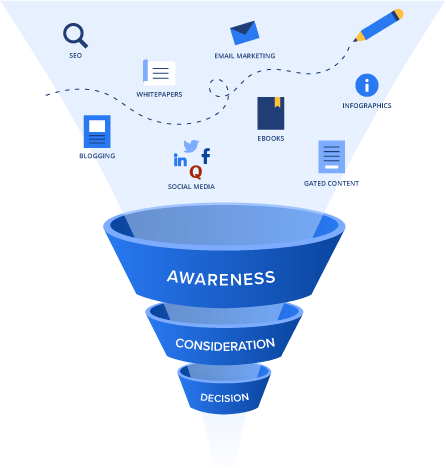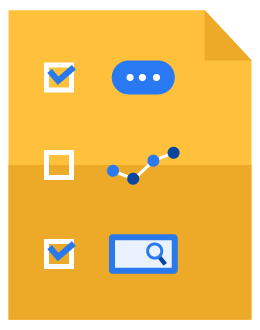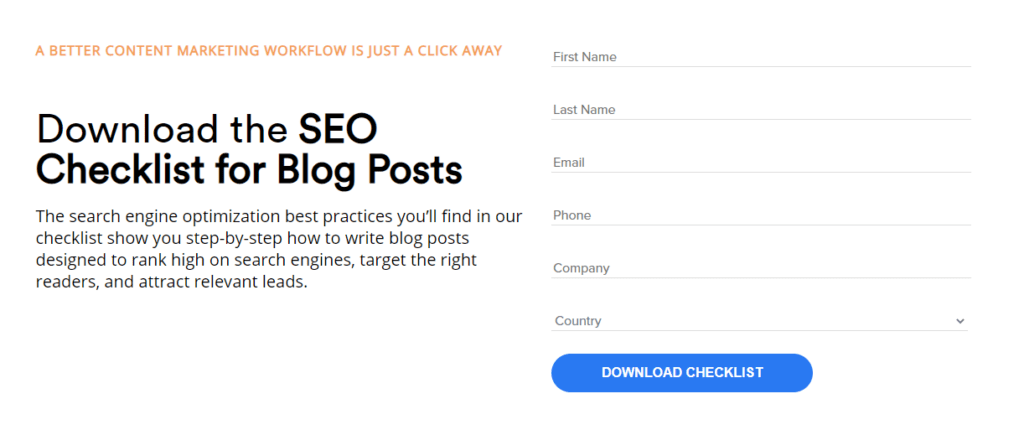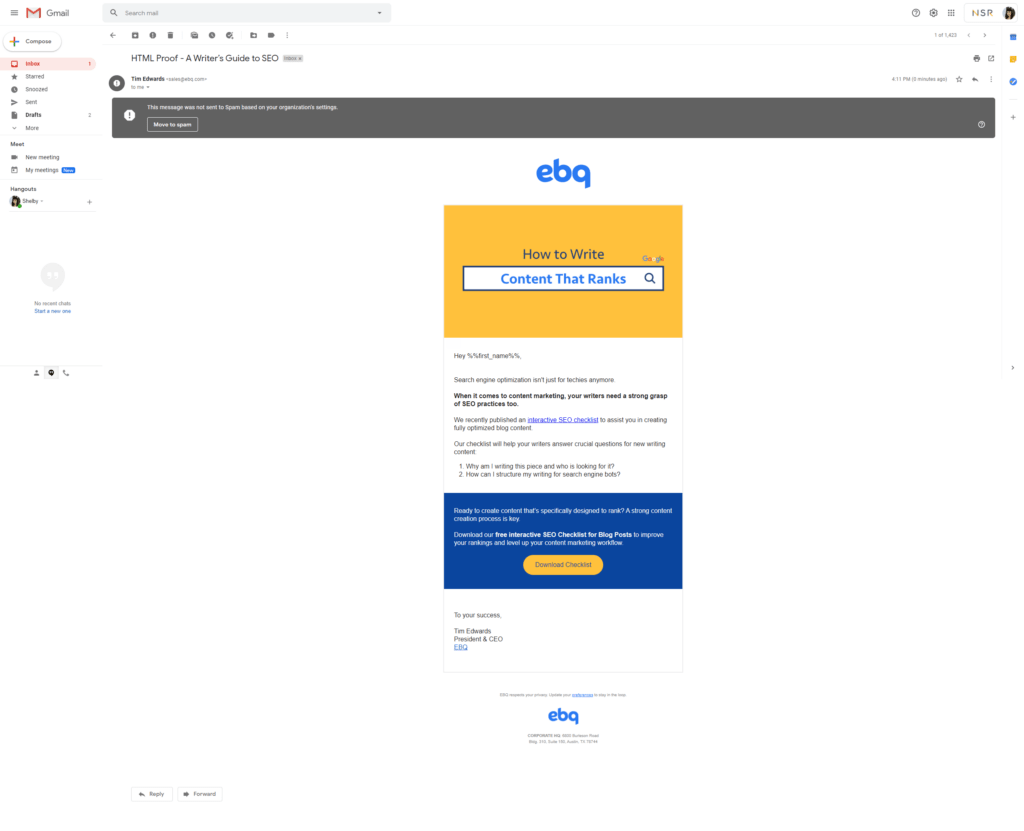Content marketing is a relatively new specialization in marketing and one that is often overlooked due to its slow and steady approach in a generally fast business environment, which leaves many wondering how content generates marketing-qualified leads (MQLs).
Content marketing generates B2B leads in a number of ways: it starts with getting relevant visitors on your website by providing information relevant to their needs.
Speaking on the pain points your ideal buyers experience in the early stages of the buying cycle can be a strategic way to get prospects to engage further with your brand.
Utilizing content marketing can be a powerful way to showcase thought leadership in your industry, making your brand (and, by extension, your products and services) more trustworthy.
What is thought leadership content?
Thought leadership content increases the credibility of your brand by leveraging your experience to stand out from the crowd of competitors. Creating content pieces that leverage your unique expertise and skillset helps your company build rapport with your audience.
For instance, EBQ regularly posts thought leadership pieces that cover a specific issue or pain point in B2B marketing and sales, which we post on the EBQ blog and social media.
By addressing a relatable issue through various mediums and creating a resolution based on the expertise of our leaders in each department, EBQ gives voice to the business without sounding too promotional.
Building this credibility with your audience leads more readers to trust your expertise, contact you, and become a new lead.
Align content strategy with your buyer’s journey.
The most important stages of the buyer’s journey to focus on with your content strategy are the awareness and the consideration stages, as they are the critical stages that come before closing the deal.
Identifying the pain points in your awareness stage is crucial because that is where your solution is introduced. It’s important in the consideration stage to then show your audience why your solution is the best option.

However, content marketing isn’t only for lead generation. Your content strategy can touch on every stage of the sales funnel. Creating valuable resources for both prospects and existing clients is a smart approach to maximizing your buyer’s journey and growing your customer accounts.
Types of content marketing
Types of content you can create to engage top-of-funnel buyers:
- Engaging, search engine optimized blog posts and articles
- Informative and persuasive gated content and whitepapers
- Email campaigns to promote consistent engagement
- Social media content to establish the voice of your brand
In breaking down the types of content marketing, we see how each type provides value for readers and captures new leads.
And by connecting different content types into a cohesive branded journey, you can better resonate with your ideal audience and generate more B2B leads.
Blog Content Strategy
If you have ever read The Tortoise and the Hare, you know the key takeaway is slow and steady wins the race. That lesson is very much true for blogging strategy.
It takes time to write blog posts, and a lot more goes into the process of publishing than one may think. Identifying the informational needs of your audience and building up a readership is a gradual process.
But once you put the time and effort in, blogging is a great way to get valuable prospects on your website and will pay off in the long run.
Implementing an SEO strategy to start ranking in the organic results on search engines does not happen overnight. It is a gradual process.
Search Engine Optimization
One way blogs increase engagement is through utilizing search engine optimization. SEO is the key to creating content that ranks well on Google and other search engines, making your website more visible to your leads and making them more likely to click on it.
Don’t miss out on an opportunity to turn visitors into MQLs just because they cannot find your site.
Some tips to help with search engine optimization:
- Research keywords your audience searches for
- Find keywords your competitors are using
- Provide targeted information buyers are looking for
- Ensure your web content is technically optimized
If you aren’t sure how to get started with SEO, we published a post that covers best SEO practices for blog posts. You can also get our free SEO checklist to guide your blogging efforts.

Download the SEO Content Creation Checklist for Blog Posts
Create an SEO-researched blog post that increases search visibility by downloading our free interactive checklist.
Visuals & Infographics
Another aspect of blogs that can help visitors become leads is using images and other visuals. It may seem like a small detail, but creative imagery—especially imagery that makes the information more digestible—is a type of content that engages readers.
If your blog is covering a complex topic, consider creating an infographic to break up the hefty material and provide your reader with something visual that summarizes the content.
Infographics can be used in blogs, shared on social media, and can help your website rank through image search. If a user searches your topic and an appealing, easy-to-read graphic pops up, they might be more likely to click.
Blogs, SEO, and infographics may not pay off immediately, but they can be a long-term win for your company because of how they help your site rank and the steady amount of traffic they generate over time.
Gated Content
What is gated content? Gated content includes resources like eBooks and whitepapers that visitors can access after filling out a form and providing information such as their email address.
By asking for prospects’ information before they access specific content, you can follow up and send similar, relevant content.
Gated content is one of the primary ways content generates leads. If done effectively, it helps you nurture prospects over time and push them further down the funnel.

eBooks
eBooks are resources that go much more in-depth into a topic than blog posts. They may comprise several chapters or sections of information and take longer for readers to digest.
They also take a lot more time for your team to produce, but the payoff can be gratuitous. If your eBook is valuable enough, making it available through a form fill can create a long-lasting lead conversion point.
We typically suggest posting some variation of ebook content as long-form guides on your blog, in order to lead visitors to gated content.
For instance, our B2B Marketing Strategy Framework Guide is broken down by chapters on our blog. By providing our audience with actionable insights about marketing strategy, we’re offering them valuable information that makes filling out a form worth it—because they receive the information in PDF form to read again later.
Once a reader fills out your form and becomes a lead, you can begin further nurturing and targeting them through marketing campaigns.
Whitepapers
Another example of gated content would be whitepapers, such as case studies and product information sheets.
Case studies and product sheets are extremely valuable as gated content. If a prospect fills out a form for this type of content, then you already have an initial understanding of what they are looking for and how to target them.
Knowing which products or services someone is interested in, or the business challenges they are facing, provides insight into potential purchases and helps both marketing and sales nurture them effectively.
For guidance on what type of whitepapers you can create as gated content, read our post Sales Collateral Best Practices for Every Stage of the Sales Funnel. It provides some examples of assets that can be leveraged by both marketers and salespeople.
Email marketing + content
Email marketing is a data-driven tool that many content marketers use to follow their prospects down the funnel and keep them engaged with content.
A well-developed email marketing strategy fits together with other content types such as blogs, gated content, and even social media. Promoting your content through your emails encourages more people to read, download, or share it.
Even the emails themselves require targeted content to appeal to the target audience. Creating a persuasive subject line that boosts open rates is what really kicks off a stellar email marketing campaign.
After that, it is up to the content marketer to create a personalized, clear, and concise email. Keep in mind the attention span for reading an email is comparatively shorter, especially for prospects who are at the beginning stages of the buyer’s journey.

The progress of your email campaigns can be run and monitored through whichever marketing automation platform you’re using, such as Salesforce Pardot, Mailchimp, or Marketo.
Social media content strategy
Social media is more than just a place to connect with friends and family; it can also be a tool for your business to better speak to your audience and create a community around your brand.
Social media can be an outstanding asset to your content strategy. Interweaving your blogs, gated content, and emails—sharing your company content on social media can boost its visibility and shareability. It is also a way to facilitate communication and monitor your audience’s engagement with likes and comments.
If your business had a voice, what would it sound like? When you post, what would your customers resonate most with?
Creating a brand personality and attaching it to every piece of content you push out on social media is paramount to your prospects’ understanding and eventual trust of your business. Using captivating captions, visuals, and relevant hashtags are how you draw prospects to your website.
Additionally, it can be a fantastic tool to keep your audience up-to-date with information about events, new product releases, or big news for your business. Social media is an important tool that can be leveraged to communicate with your prospects and customers in every stage and works best paired alongside your other content marketing initiatives.
Benefits of content marketing
The slower nature of content marketing is worth it because the MQLs you generate are higher quality, more qualified, and likely have provided some indication of their needs. Plus, using a mix of different types of content marketing opens up a lot of doors for your leads to go through.
EBQ’s content marketing specialists have helped many organizations effectively gain visibility with their target audiences and generate more MQLs. Contact our specialists for help boosting lead generation through content marketing.

Download the SEO Content Creation Checklist for Blog Posts
Create an SEO-researched blog post that increases search visibility by downloading our free interactive checklist.


